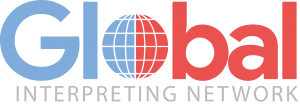
Effective communication is a cornerstone of quality healthcare. It ensures that patients understand their diagnoses, treatment options, and care instructions, leading to better health outcomes. However, for Deaf and hard-of-hearing patients, communication barriers can pose significant challenges in accessing and understanding medical care. These challenges can lead to misunderstandings, misdiagnoses, and non-compliance with treatment plans, ultimately impacting the overall quality of care they receive.
American Sign Language (ASL) plays a crucial role in bridging this communication gap. As a fully developed and distinct language with its own grammar and syntax, ASL allows Deaf patients to communicate their needs, concerns, and questions effectively. The integration of ASL interpretation in healthcare settings is essential to ensure that Deaf and hard-of-hearing patients receive the same level of care and attention as their hearing counterparts. This blog post explores the importance of ASL interpretation in healthcare and how it contributes to better health outcomes, patient satisfaction, and compliance with legal and ethical standards.
Understanding American Sign Language (ASL)
American Sign Language (ASL) is a rich, complex language that serves as the primary means of communication for the Deaf community in the United States and parts of Canada. Unlike spoken English, ASL relies on visual-manual modality, utilizing hand gestures, facial expressions, and body movements to convey meaning. This visual nature makes ASL uniquely suited to expressing a wide range of concepts and emotions, enabling full and nuanced communication.
ASL has a distinct grammar and syntax that differ significantly from English. For instance, while English typically follows a Subject-Verb-Object (SVO) word order, ASL often follows a Topic-Comment structure. This linguistic distinction highlights the need for specialized ASL interpreters who are fluent in both ASL and English, ensuring accurate and effective translation between the two languages.
The cultural significance of ASL cannot be overstated. It is more than just a language; it is a central component of Deaf culture and identity. The Deaf community has its own history, values, and social norms, all of which are closely tied to the use of ASL. For many Deaf individuals, ASL is their first language and the primary means through which they interact with the world.
Understanding these aspects of ASL underscores the importance of professional ASL interpretation in healthcare settings. It is not enough to simply translate words; interpreters must bridge cultural and linguistic gaps to ensure that Deaf patients fully understand and are fully understood. This level of comprehension is critical for effective healthcare delivery and underscores the necessity of skilled ASL interpreters in medical environments.
The Role of ASL Interpretation in Healthcare
American Sign Language (ASL) interpretation is vital in healthcare settings to ensure that Deaf and hard-of-hearing patients receive accurate and comprehensive medical information. Professional ASL interpreters facilitate communication between healthcare providers and patients, ensuring that both parties understand each other clearly. This role is critical for several reasons:
Explanation of ASL Interpretation and the Role of ASL Interpreters
ASL interpreters are trained professionals who are fluent in both ASL and English. They possess the skills to accurately translate spoken language into sign language and vice versa. Their role in healthcare settings includes interpreting medical histories, symptoms, diagnoses, treatment plans, and patient questions or concerns. By doing so, they help bridge the communication gap between Deaf patients and healthcare providers, ensuring that critical information is conveyed accurately and effectively.
Importance of Professional ASL Interpreters Over Untrained Family Members or Staff
While family members or untrained staff might offer to interpret, relying on them can lead to significant communication issues. Family members may lack the technical vocabulary required for medical discussions and might inadvertently omit or misinterpret information. This can lead to misunderstandings, misdiagnoses, and inappropriate treatments. Moreover, involving family members in medical interpretation can breach patient confidentiality and put undue emotional pressure on the family.
Professional ASL interpreters, on the other hand, are bound by a code of ethics that includes maintaining confidentiality, impartiality, and accuracy. They are trained to handle complex medical terminology and sensitive health information, ensuring that Deaf patients receive the same standard of care as hearing patients. Their expertise helps to ensure that the patient’s rights are protected and that they are fully informed about their health and treatment options.
In summary, the role of ASL interpretation in healthcare is indispensable. Professional ASL interpreters ensure effective communication, enhance patient understanding, and uphold the quality and integrity of medical care for Deaf and hard-of-hearing patients. By prioritizing the use of trained interpreters, healthcare providers can significantly improve the patient experience and health outcomes for this population.
Enhancing Patient Understanding and Compliance
One of the most critical aspects of healthcare is ensuring that patients fully understand their medical conditions, treatment options, and care instructions. For Deaf and hard-of-hearing patients, this understanding is facilitated through effective ASL interpretation. Here’s how ASL interpretation enhances patient understanding and compliance:
Accurate Conveyance of Medical Information
ASL interpreters play a pivotal role in accurately conveying complex medical information to Deaf patients. They translate medical jargon, diagnoses, and treatment plans into understandable sign language, ensuring that patients have a clear grasp of their health situation. This accurate conveyance helps prevent misunderstandings that could lead to incorrect self-care or medication usage.
Impact on Patient Understanding of Diagnoses, Treatment Options, and Care Instructions
When patients understand their medical conditions and the rationale behind their treatment plans, they are more likely to follow through with the prescribed care. ASL interpretation helps patients grasp the nuances of their diagnoses, the benefits and risks of various treatment options, and the importance of adhering to care instructions. This comprehensive understanding empowers patients to make informed decisions about their health and fosters a sense of control over their medical care.
Examples of Improved Patient Compliance and Health Outcomes Due to Clear Communication
Clear communication facilitated by ASL interpreters leads to better patient compliance and health outcomes. For instance, a Deaf patient with diabetes who fully understands their condition, dietary restrictions, and medication regimen is more likely to manage their blood sugar levels effectively. Similarly, a Deaf patient recovering from surgery who comprehends their post-operative care instructions is less likely to experience complications.
Numerous studies have shown that when communication barriers are removed, patient compliance improves significantly. Deaf patients who receive professional ASL interpretation services are more likely to attend follow-up appointments, adhere to medication schedules, and engage in preventive health measures. This increased compliance translates into better health outcomes and a higher quality of life.
ASL interpretation is essential for enhancing patient understanding and compliance. By ensuring that Deaf and hard-of-hearing patients have access to clear and accurate medical information, healthcare providers can improve patient engagement, adherence to treatment plans, and overall health outcomes.
Ensuring Legal and Ethical Compliance
Providing American Sign Language (ASL) interpretation in healthcare settings is not just a matter of good practice; it is also a legal and ethical obligation. Ensuring that Deaf and hard-of-hearing patients have access to effective communication is crucial for compliance with laws and upholding ethical standards in healthcare. Here’s why:
Overview of Legal Requirements for ASL Interpretation in Healthcare
Several laws mandate the provision of ASL interpretation in healthcare settings to ensure that Deaf patients receive equitable care:
- Americans with Disabilities Act (ADA)T: Title III of the ADA requires healthcare providers to provide effective communication for patients with disabilities, including those who are Deaf or hard of hearing. This often necessitates the provision of qualified ASL interpreters.
- Section 504 of the Rehabilitation Act: This law prohibits discrimination based on disability in programs and activities that receive federal financial assistance. Healthcare providers must ensure that Deaf patients have equal access to their services, including through the provision of ASL interpreters.
- Affordable Care Act (ACA): The ACA includes provisions to enhance language access and effective communication in healthcare settings, emphasizing the need for qualified interpreters for patients with limited English proficiency or who are Deaf.
Ethical Considerations in Providing Equal Access to Healthcare for Deaf Patients
Beyond legal obligations, healthcare providers have an ethical duty to ensure that all patients receive the highest standard of care. This includes:
- Equity and Inclusion: Providing ASL interpretation aligns with the ethical principles of equity and inclusion, ensuring that Deaf patients have the same opportunities to understand and participate in their healthcare as hearing patients.
- Respect for Patient Autonomy: Effective communication is crucial for respecting patient autonomy, allowing Deaf patients to make informed decisions about their health based on a clear understanding of their medical situation.
- Confidentiality and Trust: Using professional ASL interpreters ensures that patient confidentiality is maintained and fosters trust between patients and healthcare providers. Relying on untrained individuals can compromise both confidentiality and the quality of communication.
Consequences of Non-Compliance for Healthcare Providers
Failing to provide ASL interpretation can have serious consequences for healthcare providers, including:
- Legal Penalties: Non-compliance with ADA, Section 504, and ACA requirements can result in legal action, fines, and penalties. Healthcare providers may face lawsuits from patients who have been denied adequate communication access.
- Reputation Damage: Healthcare providers who do not offer ASL interpretation may suffer damage to their reputation, losing the trust of the Deaf community and potentially facing public backlash.
- Patient Harm: The most significant consequence of non-compliance is the potential harm to patients. Miscommunication can lead to misdiagnoses, incorrect treatments, and overall poorer health outcomes for Deaf patients.
Improving Patient Satisfaction and Trust
Effective communication is fundamental to building trust and satisfaction in healthcare settings. For Deaf and hard-of-hearing patients, the provision of American Sign Language (ASL) interpretation plays a crucial role in achieving these goals. Here’s how ASL interpretation improves patient satisfaction and trust:
The Role of Effective Communication in Building Trust Between Patients and Healthcare Providers
Trust is the cornerstone of the patient-provider relationship. When patients feel that their healthcare providers understand them and can address their needs, they are more likely to trust their advice and follow their recommendations. Effective communication is essential in building this trust, especially for Deaf patients who rely on ASL to communicate. ASL interpreters ensure that Deaf patients can fully understand and be understood by their healthcare providers, creating a foundation of trust and mutual respect.
How ASL Interpretation Enhances Patient Satisfaction by Ensuring They Feel Heard and Understood
Patient satisfaction is significantly influenced by the quality of communication they experience. When Deaf patients have access to professional ASL interpreters, they feel more comfortable and confident in their healthcare interactions. They are able to express their concerns, ask questions, and receive clear explanations in their preferred language. This level of understanding and responsiveness leads to higher satisfaction levels, as patients feel valued and respected.
Real-Life Testimonials or Case Studies Showcasing Positive Experiences Due to ASL Interpretation
Consider the story of Jane, a Deaf patient who visited a hospital for a routine check-up. In the past, Jane had struggled with healthcare appointments due to the lack of effective communication. However, during this visit, the hospital provided a professional ASL interpreter. Jane was able to communicate her symptoms clearly, understand the doctor’s advice, and ask questions about her treatment. This experience left her feeling satisfied and confident in her healthcare provider’s abilities. Jane’s positive experience is just one example of how ASL interpretation can transform the patient experience.
In another instance, a healthcare clinic implemented a policy of always having ASL interpreters available for Deaf patients. As a result, the clinic saw a significant increase in patient satisfaction scores among their Deaf patients. These patients reported feeling more involved in their healthcare decisions and appreciated the effort made by the clinic to accommodate their communication needs.
Reducing Health Disparities and Promoting Inclusion
The provision of American Sign Language (ASL) interpretation in healthcare settings is a critical step toward reducing health disparities and promoting inclusion. By ensuring that Deaf and hard-of-hearing patients have equal access to healthcare services, providers can address systemic inequalities and foster a more inclusive environment. Here’s how ASL interpretation helps achieve these goals:
The Role of ASL Interpretation in Addressing Health Disparities Faced by the Deaf Community
Health disparities arise when certain populations receive lower-quality healthcare due to barriers such as language, cultural differences, and lack of resources. Deaf individuals often face significant challenges in accessing appropriate healthcare services, leading to poorer health outcomes compared to their hearing counterparts. These challenges include miscommunication with healthcare providers, misunderstanding of medical information, and reluctance to seek care due to previous negative experiences.
By providing professional ASL interpretation, healthcare providers can bridge these communication gaps. ASL interpreters ensure that Deaf patients fully understand their medical conditions, treatment options, and care instructions, thereby improving their ability to make informed health decisions. This improved communication helps to reduce disparities by ensuring that Deaf patients receive the same quality of care as hearing patients.
Promoting Inclusivity and Equity in Healthcare Settings Through Accessible Communication
Inclusivity in healthcare means ensuring that all patients, regardless of their background or abilities, have access to the care they need. ASL interpretation is a vital component of this inclusivity. It demonstrates a healthcare provider’s commitment to accommodating the unique needs of Deaf patients, making them feel valued and respected.
Equitable healthcare goes beyond providing the same services to everyone; it involves tailoring services to meet the specific needs of different populations. By integrating ASL interpretation, healthcare providers can offer equitable care that addresses the linguistic and cultural needs of Deaf patients. This approach not only improves health outcomes but also fosters a sense of belonging and acceptance within the healthcare system.
Long-Term Benefits of Fostering an Inclusive Environment for All Patients
Creating an inclusive healthcare environment has long-term benefits for both patients and providers. For patients, it leads to better health outcomes, increased satisfaction, and a stronger sense of trust in their healthcare providers. For providers, it can result in higher patient retention rates, positive word-of-mouth referrals, and a reputation for being a compassionate and inclusive healthcare facility.
Moreover, fostering inclusivity helps to build a diverse and culturally competent healthcare workforce. When healthcare providers prioritize inclusive practices, they create an environment where diversity is celebrated, and all staff members are trained to meet the needs of a varied patient population. This cultural competence is essential for delivering high-quality care in a multicultural society.
Best Practices for Implementing ASL Interpretation Services
Successfully integrating American Sign Language (ASL) interpretation services into healthcare settings requires careful planning and execution. Here are some best practices to ensure that ASL interpretation services are effective and beneficial for both patients and healthcare providers:
Steps for Healthcare Providers to Integrate ASL Interpretation Services Effectively
- Assessment of Needs: Conduct a thorough assessment to determine the specific needs of Deaf and hard-of-hearing patients in your healthcare facility. Identify the frequency and types of interactions that require ASL interpretation.
- Partner with Professional ASL Interpreters: Establish relationships with certified ASL interpreters or reputable interpretation agencies. Ensure that interpreters are qualified, experienced, and familiar with medical terminology.
- Develop Policies and Procedures: Create clear policies and procedures for requesting and utilizing ASL interpretation services. Include guidelines for scheduling interpreters, handling emergencies, and ensuring confidentiality.
- Allocate Resources: Allocate sufficient resources, including budget and staffing, to support the implementation of ASL interpretation services. Ensure that interpreters are available during peak times and for emergency situations.
- Promote Awareness: Raise awareness among staff and patients about the availability of ASL interpretation services. Provide information on how to request an interpreter and the benefits of using professional interpretation services.
Training Staff on the Importance of ASL Interpretation and How to Work with Interpreters
- Educate Staff: Provide training for all healthcare staff on the importance of ASL interpretation and the specific needs of Deaf patients. Emphasize the legal and ethical obligations to provide effective communication.
- Communication Etiquette: Train staff on proper communication etiquette when working with Deaf patients and ASL interpreters. This includes speaking directly to the patient, maintaining eye contact, and allowing the interpreter to facilitate the conversation without interruptions.
- Cultural Competence: Enhance staff understanding of Deaf culture and the unique experiences of Deaf patients. This knowledge helps build a respectful and supportive environment for all patients.
- Scenario-Based Training: Use scenario-based training to help staff practice interactions with Deaf patients and ASL interpreters. This hands-on approach can improve confidence and competence in real-life situations.
Utilizing Technology and Remote Interpretation Services to Ensure Accessibility
- Video Remote Interpreting (VRI): Implement Video Remote Interpreting (VRI) services to provide ASL interpretation for patients when on-site interpreters are not available. VRI allows interpreters to provide services remotely via video conferencing technology.
- Accessible Technology: Equip healthcare facilities with technology that supports VRI, including high-quality video conferencing equipment and reliable internet connections. Ensure that staff are trained to use this technology effectively.
- Mobile Solutions: Consider mobile interpretation solutions for home visits, telehealth appointments, and other situations where traditional in-person interpretation may not be feasible. Mobile apps and devices can facilitate real-time ASL interpretation anywhere.
- Feedback and Improvement: Continuously gather feedback from patients and staff about the effectiveness of ASL interpretation services. Use this feedback to make ongoing improvements and ensure that services meet the needs of all patients.
—
Incorporating American Sign Language (ASL) interpretation into healthcare settings is essential for providing equitable and high-quality care to Deaf and hard-of-hearing patients. By ensuring effective communication through professional ASL interpreters, healthcare providers can enhance patient understanding, satisfaction, and trust while complying with legal and ethical standards. Ultimately, prioritizing ASL interpretation services fosters an inclusive healthcare environment where all patients can receive the care they deserve, leading to better health outcomes and a stronger, more compassionate healthcare system.
For getting started with ASL interpretation at your healthcare organization, contact us.


